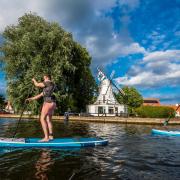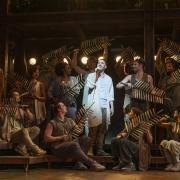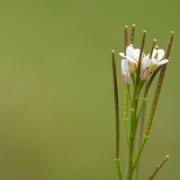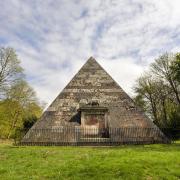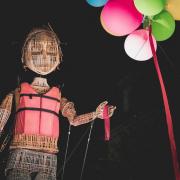These ancient buildings house some wonderful secret objects, from illuminated books to 500-year-old paintings

“Why are there so many churches in Norfolk?” I’ve been asked this frequently by visitors to churches in my care as rector. Some move onto a follow-up question: “Why are there so many treasures in them?” The answer is the same to both questions - history and faith.
In the middle ages, Norfolk was one of the wealthiest and most heavily populated areas of England. Economically, Norwich was England’s second city, with workshops producing high quality books, stained glass, metalwork and paintings. It had better transport links to the continent than most of England and imported goods and ideas. Wealthy parishioners and clergy used their wealth to benefit their immortal souls by rebuilding and adorning churches.
Much has been lost to the Reformation and centuries of decay, but more survives here than elsewhere in East Anglia, where neighbouring counties were ravaged by the Civil War. Much has been added in the following centuries, too.
East Harling church would be a good place to begin a church treasure hunt. Within a distinguished 15th century building, a vast east window’s series of panels tell the gospel story from the Annunciation to Virgin Mary through to the Holy Spirit’s coming - a rare surviving example of medieval Norwich glass. The church also possesses a modern treasure in the Harling Christ, painted by Norfolk artist Maz Jackson in a contemporary style but using techniques and materials from the Middle Ages. Christ’s wounds are picked out in gold, revealing the glory that came through his suffering.

The Norwich Quaker ‘Angel’ prison reformer
From the outside, St Mary’s Tittleshall is small, unremarkable medieval church. However, it contains a wealth of Coke family monuments, who lived there from the 1530s before moving to Holkham Hall. The memorials reveal family history and changing tastes. Two particularly fine examples are busts of the 1st Earl and Countess of Leicester by Louis-Francois Roubiliac (1760) and Mrs. James Coke’s memorial by Joseph Nollekens, arguably eighteenth-century Britain’s finest sculptor. A marble tableau depicts Mrs. Coke’s hand taken from a broken column, a traditional symbol of mourning, by an angel who has come to guide her upwards through the clouds – a comforting image for her family, exquisitely depicted.

Travelling east of Norwich, Ranworth’s ‘Cathedral of the Broads’ contains an ornate, beautifully painted rood screen (c.1470). Much survives of the painted figures on the screen, despite the church’s near-ruination in the nineteenth century. Produced by three different Norwich artists’ workshops, they show German influence in the seated figures in the altarpieces that flank the screen. Ranworth houses another unique treasure – its Antiphoner (1460), an illuminated service book containing music that was sung at the seven daily services until 1548. Most antiphoners were destroyed at the Reformation. Ranworth’s is the only one to have returned to its original parish.
This is where our treasure hunt ends – a taster of what can be discovered in Norfolk’s churches. Not all contain works of art, but each is worth exploring. Each contains unique stories, objects and images that can intrigue, inspire and encourage us. Church treasures connect us with their makers, patrons, and their ultimate creator. Jesus said, “where your treasure is, there will your heart be also” (Matthew 6:21). I hope you find the treasure you seek.
Rev Canon Nick Garrard is rector of Rockland Benefice in the Bramerton Group and bishop’s officer for Christian spirituality through the creative arts.









